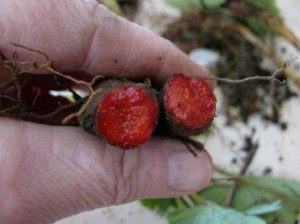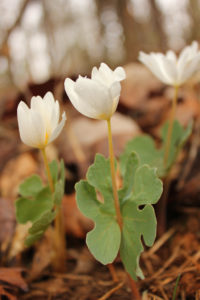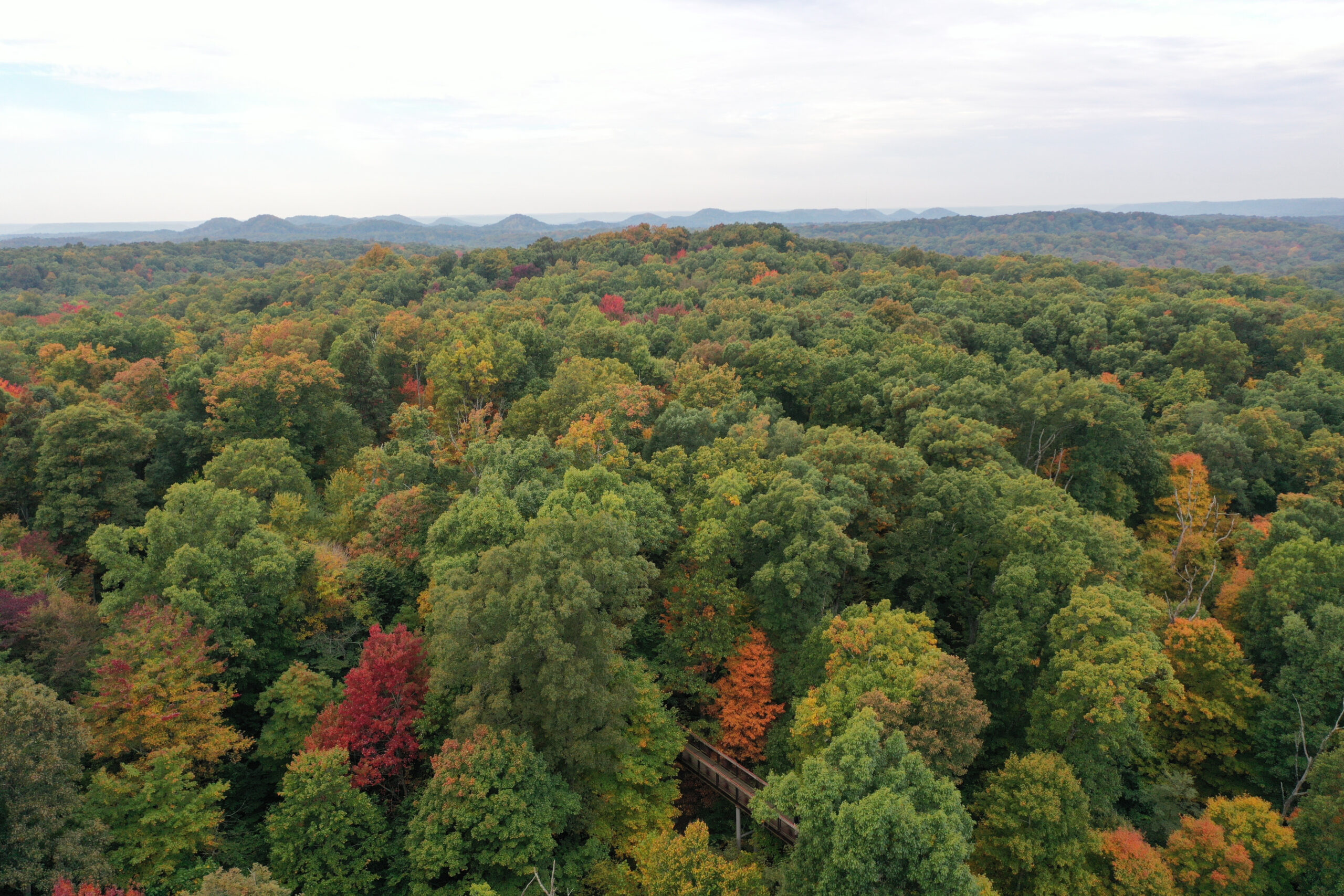By Wren Smith
When we take the time to learn the stories hidden in plants, we find tales of ecology, mythology, history, and mystery. We find stories that root us to the land; stories that help us feel connected to the earth.
Last week I shared an ecological story hidden in the relationship between bloodroot, Sanguinaria canadensis and ants. In this post I’ll share some of the mystery and history found in the underground rhizome and roots.
The rhizome, the thick underground stem of bloodroot is the source of the plants’ common name, and also fits with the genus name, Sanguinaria …think of the red wine beverage, sangria. A mature bloodroot rhizome can be as thick as your big toe. If cut open, the rhizome “bleeds” a reddish orange sap. The capillary action as the sap rises to the surfaces of the cut, gives the gruesome appearance of an amputated digit. This red dye contains a powerful alkaloid, sanguinarine that kills animal cells, thus it is rather caustic on the skin. There are numerous claims of the value of bloodroot extract as a treatment for skin and other forms of cancer. But the U.S. Food and Drug Administration has included many of these on a list of 187 Fake Cancer ‘Cures’. But oddly enough, because of the antibacterial properties of bloodroot sap, the Colgate company adds a small amount of bloodroot to their toothpaste. It is also added to other oral hygiene products. There is a long standing debate among advocates for and against the efficacy and even safely of bloodroot extract and I won’t wade in the middle of that now. Personally, I’m content to follow singer, Iris DeMent’s advice and just “Let the Mystery Be”. Besides, I have a more pleasant association with bloodroot.

Many years ago I attended an Earth Skills workshop in the mountains of north Georgia, where I was privileged to watch a small group of Cherokee women weaving beautiful split cane baskets from the native river cane, Arundinaria gigantea. Some of the river cane splits were dyed with bloodroot (rhizome and smaller roots), and black walnut hulls. As they wove their baskets, the women shared stories of gathering the walnuts and the bloodroot, and their process for turning that harvest into natural dyes for their baskets.
The carefully crafted patterned baskets of orange-red and walnut brown were exquisite; and have stayed in my memory. To this day I cannot pass a patch of bloodroot, without thinking of those Cherokee women, and the deep traditions they were keeping alive through their storytelling and artistry. Such deep rooted knowledge is its own medicine.
Want more Tales from Bent Twig? Click here to view the archive.

